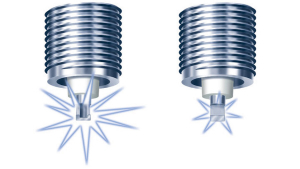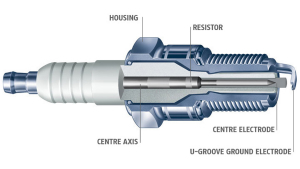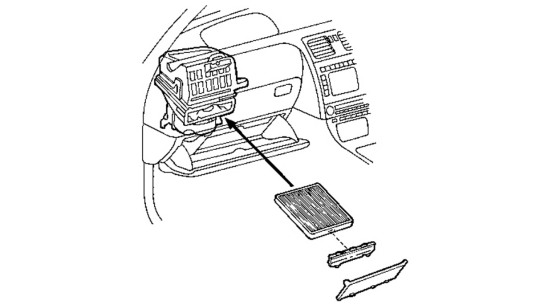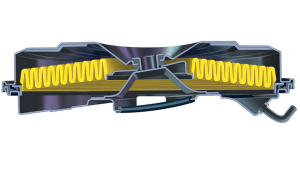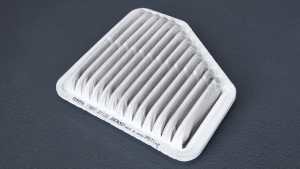Battery Maintenance
Battery Maintenance is an important issue. The battery should be clean. Cable connection needs to be clean and tightened. Many battery problems are caused by dirty and loose connections. Serviceable battery needs to have the fluid level checked regularly and only at a full charge. The fluid level will always be higher at a full charge. Distilled water is best; tap water is loaded with chemicals and minerals that are harmful to your battery, but not as bad as no water. Don't overfill battery cells especially in warmer weather. The natural fluid expansion in hot weather will push excess electrolytes from the battery. To prevent corrosion of cables on top post batteries, use a small bead of silicon sealer at the base of the post and place a felt battery washer over it. Coat the washer with high temperature grease or petroleum jelly (Vaseline). Then place cable on post and tighten, coat the exposed cable end with the grease. Most folks don't know that just the gases from the battery condensing on metal parts cause most corrosion.
Battery Testing
To measure specific gravity buy a temperature compensating hydrometer at an auto parts store. To measure voltage, use a digital D.C. Voltmeter.
You must first have the battery fully charged. The surface charge must be removed before testing. If the battery has been setting at least 6 hours you may begin testing. To remove surface charge the battery must experience a load of 20 amps for 3 plus minutes. Turning on the headlights (high beam) will do the trick. After turning off the lights you are ready to test the battery.
| State of Charge | Specific Gravity | Voltage - 12V | Voltage - 6V |
|---|
| 100% | 1.265 | 12.7 | 6.3 |
| 75% | 1.225 | 12.4 | 6.2 |
| 50% | 1.190 | 12.2 | 6.1 |
| 25% | 1.155 | 12.0 | 6.0 |
| Discharged | 1.120 | 11.90 | 6.0 |
* Sulfation of Batteries starts when specific gravity falls below 1.225 or voltage measures less than 12.4 (12v Battery) or 6.2 (6 volt battery). Sulfation hardens the battery plates reducing and eventually destroying the ability of the battery to generate Volts and Amps.
Load testing is yet another way of testing a battery. Load test removes amps from a battery much like starting an engine would. A load tester can be purchased at most auto parts stores. Some battery companies label their battery with the amp load for testing. This number is usually 1/2 of the CCA rating. For instance, a 500CCA battery would load test at 250 amps for 15 seconds. A load test can only be performed if the battery is near or at full charge.
The results of your testing should be as follows.
- Hydrometer readings should not vary more than .05 difference between cells in a strong healthy battery.
- Digital Voltmeters should read as the voltage is shown in this document. The sealed AGM and Gel-Cell battery voltage (full charged) will be slightly higher in the 12.8 to 12.9 ranges. If you have voltage readings in the 10.5 volts range on a charged battery, which indicates a shorted cell.
When in doubt about battery testing, call the battery manufacturer. Many batteries sold today have a toll free number to call for help.
Selecting and Buying a New Battery
Selecting a Battery, when buying a new battery I suggest you purchase a battery with the greatest reserve capacity or amp hour rating possible. Of course the physical size, cable hook up and terminal type must be a consideration. You may want to consider a Gel-Cell or an Absorbed Glass Mat (AGM) rather than a Wet Cell; if the battery is not or can not receive regular maintenance, as it should. This is a hard call, because there is very little that substitutes for maintenance.
Be sure to purchase the correct type of battery for the job it must do. Remember an engine starting battery and deep cycle batteries are different. Freshness of a new battery is very important. The longer a battery sits and is not re-charged the more damaging sulfation build up on the plates. Most batteries have a date of manufacture code on them. The month is indicated by a letter 'A' being January and a number '4' being 2004. C4 would tell us the battery was manufactured in March 2004. Remember the fresher the better. The letter "i" is not used because it can be confused with #1.
Battery Life and Performance
Battery life and performance, average battery life has become shorter as energy requirements increase. Two phrases heard most often are "my battery won't take a charge and my battery won't hold a charge". Only 30% of batteries sold today reach the 48-month mark. In fact 80% of all battery failure is related to sulfation build-up. This build up occurs when the sulfur molecules in the electrolyte (battery acid) becomes so deeply discharged that they begin to coat the batteries lead plates. Before long the plates become so coated the battery dies. The causes of sulfation are numerous, let me list some for you.
- Batteries sit too long between charges. As little as 24 hours in hot weather and several days in cooler weather.
- Battery storage, leaving a battery sit without some type of energy input.
- Deep cycling engine start battery, remember these batteries can't stand deep discharge.
- Undercharging of battery, to charge a battery let's say 90% of capacity will allow sulfation of battery using the 10% of battery chemistry not reactivated by the incomplete charging cycle.
- Heat of 100+°F, increases internal discharge. As temperatures increase so does internal discharge. A new fully charged battery left sitting 24 hours a day at 110 degrees F for 30 days would most likely not start an engine.
- Low electrolyte level, battery plates exposed to air will immediately sulfate.
- Incorrect charging levels and settings. Most cheap battery chargers can do more damage than help.
- Cold weather is hard on the battery the chemistry does not make the same amount of energy as a warm battery. A deeply discharged battery can freeze solid in sub zero weather.
- Parasitic drain is a load put on a battery with the key off.
Battery Charging
Battery charging, remember you must put back the energy you use immediately, if you don't the battery sulfates and that affects performance and longevity. The alternator is a battery charger; it works well if the battery is not deeply discharged. The alternator tends to overcharge batteries that are very low and the overcharge can damage batteries. In fact an engine starting battery on average has only about 10 deep cycles available when recharged by an alternator. Batteries like to be charged in a certain way, especially when they have been deeply discharged. This type of charging is called 3 step regulated charging. Please note that only special SMART CHARGERS using computer technology can perform 3 steps charging techniques. You don't find these types of chargers in parts stores and Wal-Marts. The first step is bulk charging where up to 80% of the battery energy capacity is replaced by the charger at the maximum voltage and current amp rating of the charger. When the battery voltage reaches 14.4 volts this begins the absorption charge step. This is where the voltage is held at a constant 14.4 volts and the current (amps) decline until the battery is 98% charged. Next comes the Float Step, this is a regulated voltage of not more than 13.4 volts and usually less than 1 amp of current. This in time will bring the battery to 100% charged or close to it. The float charge will not boil or heat batteries but will maintain the batteries at 100% readiness and prevent cycling during long term inactivity. Some AGM batteries may require special settings or chargers.


